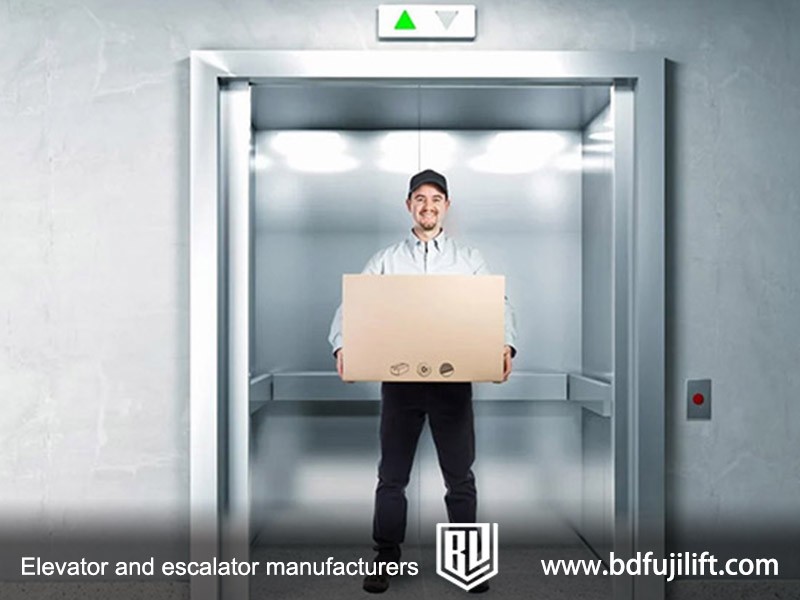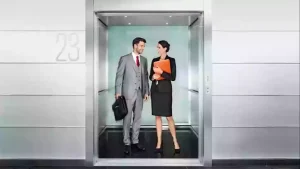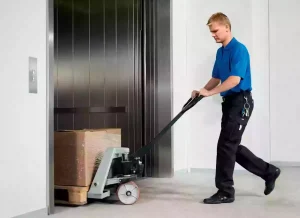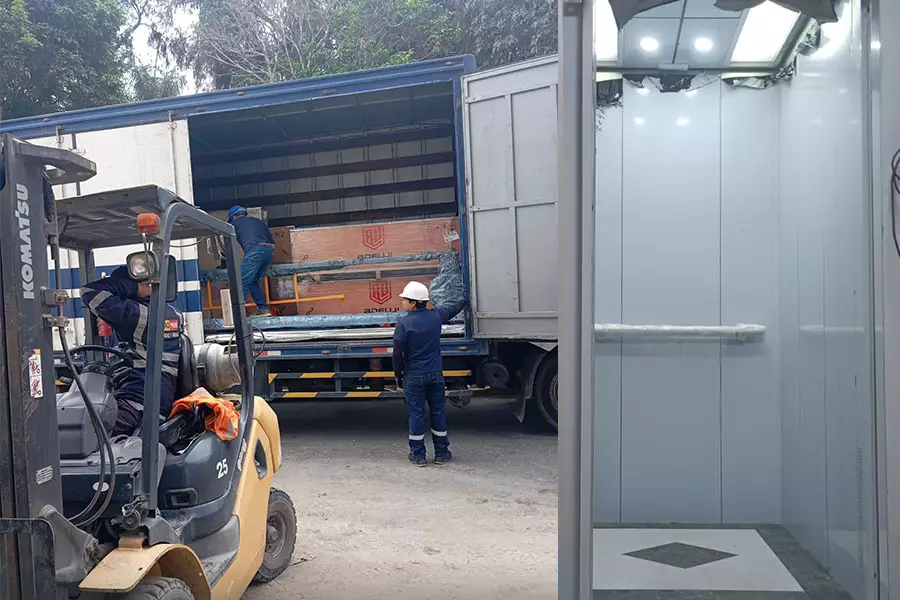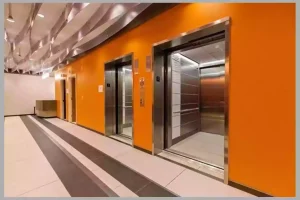Have you ever wondered if a freight elevator, which is usually used to carry heavy goods, can also be used for passengers?
Here’s how the situation might go: someone tries to use a freight elevator to transport passengers, thinking it’s a good idea. But then, they run into problems. Using a freight elevator for people can cause safety issues and may even break the law.
As someone who knows about elevator safety rules, my job is to explain how freight elevators should be used. There are rules in place to make sure elevators are safe for people. Not all freight elevators are built for passengers.
In this article, I’ll talk about:
-
The rules for using freight elevators with passengers
-
Why freight elevators are different from passenger elevators
-
The good and bad sides of using freight elevators for passengers
-
What can happen if you break the rules
By the end of this article, you’ll know when it’s safe and legal to use a freight elevator for passengers.
Regulations on Passenger Transportation in Freight Elevators
Freight elevators are built to carry heavy goods, but can they be used to transport passengers? The answer depends on certain safety rules.
In most cases, freight elevators are not allowed to carry passengers unless they are specially modified. These elevators need to meet safety standards, such as having the right door sizes, emergency communication systems, and safe speed limits.
There are a few exceptions. For example, freight elevators may be used for passengers if it’s part of the building design or in emergencies, as long as they are properly updated to meet safety requirements.
In short, freight elevators can carry passengers, but only if they are made safe to do so.
The Main Purpose of Freight Elevators
Freight elevators are designed to carry heavy items, like furniture, equipment, or big shipments. These elevators are different from passenger elevators because they are made to handle large loads. They are mostly used in places like factories, warehouses, and stores, where moving big items between floors is needed.
In short, freight elevators focus on carrying heavy things, not on comfort. That’s why they are bigger and stronger than regular elevators. These elevators help businesses move items easily and quickly, making work more efficient.
Can Freight Elevators Carry Passengers?
You might wonder if a freight elevator, usually used for heavy items, can also carry people. The answer is yes, but there are some rules to follow to make it safe.
1. Building Codes and Local Rules
Most places have rules about how elevators should be built. Freight elevators are not made to carry passengers, so they need to be changed to meet safety rules. These changes may include adding things like handrails, emergency systems, and clear floor markings to keep people safe.
2. Written Approval and Inspection
Before you use a freight elevator for passengers, you usually need written permission from local authorities. This means the elevator has been checked to make sure it is safe.
3. Who Needs Approval?
-
Local Authorities: They make sure the elevator meets the safety rules in your area.
-
Elevator Makers: If changes are made, the company that made the elevator will check that it is safe for passengers.
-
Safety Inspectors: These experts check the elevator and give it the final approval.
Freight elevators can carry passengers, but they need to be safe. Make sure to check with the right people and experts to make sure the elevator is ready and safe to use.
Why Use Freight Elevators to Carry Passengers?
You may wonder why someone would use a freight elevator to carry passengers instead of a regular passenger elevator. While it’s not the most common choice, there are some reasons why it might be useful in certain situations.
Advantages of Freight Elevators for Carrying Passengers
-
More Space: Freight elevators are bigger, which means passengers have more room to move around.
-
Cost-Effective: In some cases, using a freight elevator can be cheaper, especially if there isn’t enough space or budget for a passenger elevator.
-
Heavy Load Capacity: Freight elevators can carry more weight, so if you have many passengers or large items, it can handle it easily.
Disadvantages of Freight Elevators for Carrying Passengers
-
Lack of Safety Features: Freight elevators usually don’t have features like handrails or emergency alarms that are needed for passenger safety.
-
Slower Speed: These elevators tend to move slower than passenger elevators, which can be inconvenient if you’re in a hurry.
-
Less Comfortable: Freight elevators are built for carrying heavy goods, so they may not be as smooth or comfortable for passengers.
Consequences of Using Freight Elevators for Carrying Passengers Illegally
Using a freight elevator to carry passengers without the proper approval or safety upgrades can lead to serious consequences. These can include:
Legal Penalties: In many places, it’s against the law to use a freight elevator for passengers unless it meets specific safety rules.
Increased Risk of Accidents: Without the right safety features, using a freight elevator for people could cause accidents or even deaths.
Building Code Violations: If the elevator doesn’t follow building codes, you could face fines or the elevator might be shut down until it’s fixed.
Service Elevators as an Alternative for Carrying Passengers and Goods
You might be wondering if there is a way to carry both people and goods without modifying a freight elevator. The answer is yes, and one solution is using a service elevator.
A service elevator is designed to carry both goods and passengers. Unlike freight elevators, service elevators are built with the safety features needed for people, such as proper lighting, handrails, and emergency communication systems. They can be used to transport heavy items, but they are also safe for passengers.
Service elevators are commonly found in places like hotels, hospitals, or large buildings. They are especially useful when you need to move both people and items, but you want to keep everything safe and efficient. These elevators can be used for various purposes, such as moving luggage, supplies, or even passengers with less risk.
So, if you need to carry both people and goods without modifying a freight elevator, a service elevator is the best option. It’s designed for mixed use, making it safer and more convenient.
Conclusion
While freight elevators can technically be used to carry passengers, it is not recommended unless they are specifically modified to meet safety regulations. Always check local building codes and consult with professionals to ensure that your elevator complies with safety standards. Choosing the right type of elevator for your needs can save you time, money, and most importantly, keep everyone safe.
Recommended Reading:
Freight Elevator Costs: The Latest Price Guide
Service vs. Freight Elevator: What’s the Difference?
Freight elevator vs passenger elevator: which one should you choose?
Freight Elevator FAQ
What’s the difference between freight and passenger elevators?
Freight elevators are larger, more robust, and designed to transport heavy goods. Passenger elevators, on the other hand, are smaller, more comfortable, and come with additional safety features for people.
Can freight elevators legally carry passengers?
Generally, no. Freight elevators are not designed for passenger use. Converting them to carry passengers requires strict safety modifications and adherence to regulations.
How much does it cost to convert a freight elevator?
The cost of converting a freight elevator varies based on required modifications, such as adding safety features and making structural adjustments. It can be quite expensive.
Are freight elevators safe for passengers?
Freight elevators without modifications lack essential safety functions. They are not safe for passengers and should not be used without proper updates.


